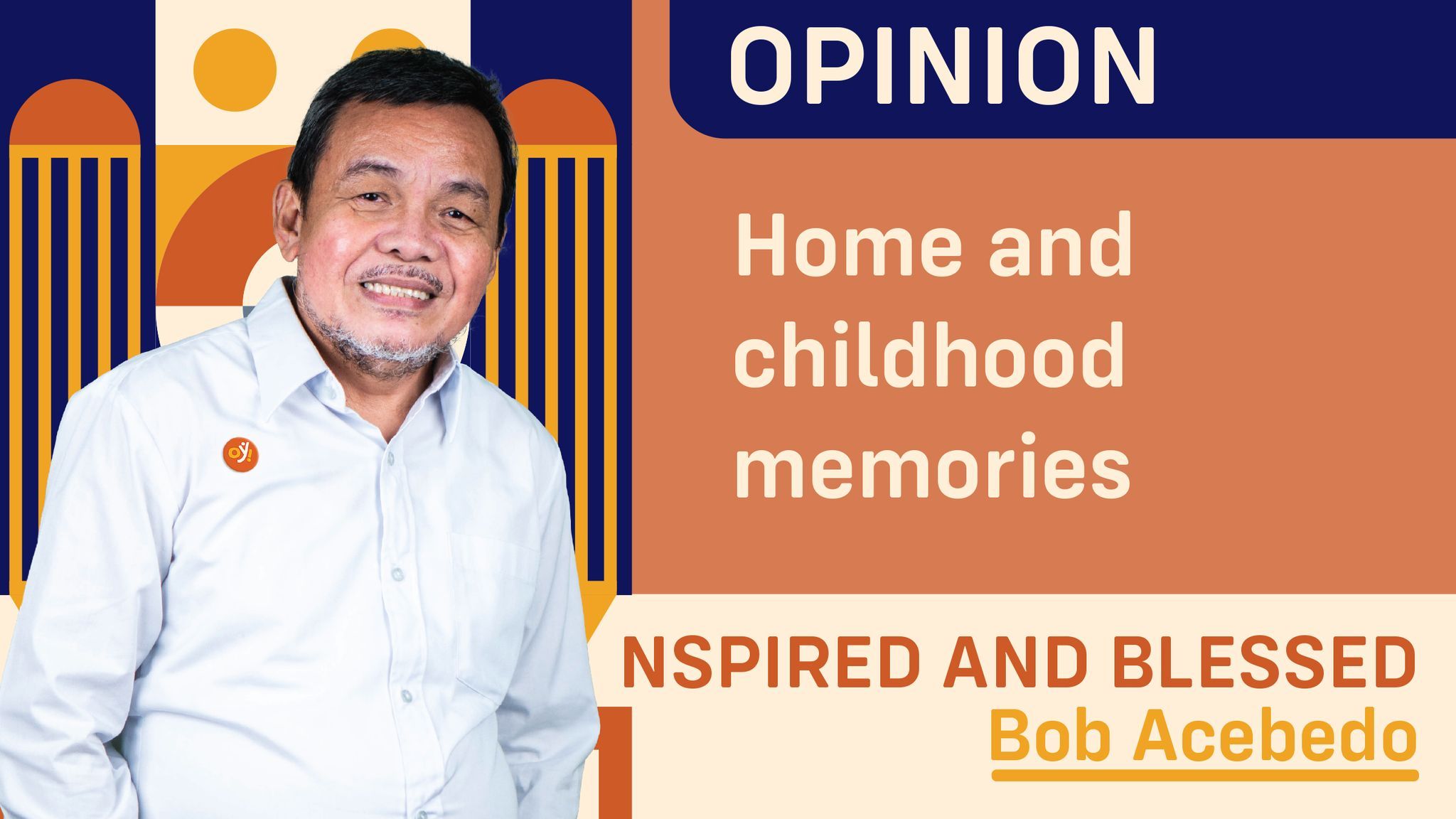Home is where I grew up spending my childhood years – and that’s Burayan, San Jose, Tacloban City.
The term “home” is nonetheless more capacious than “childhood years”, which refers to the period from the acquisition of language at 1-2 to the onset of adolescence at 12 or 13 years old. While we are apt to adduce that we spend our childhood years in a specific place and time, “home” may be accrued or applied to different human affiliations or geographical locations even outside of our biological families or childhood place. Thus, home or family may apply to adoptive family, community, work or organization, even including “foreign” affiliations or places – or, anything that you “feel at home”. In a word, home is where your heart is.
Whilst, let me go back to the home of my childhood years. Tacloban is where I spent my grade school years before entering the seminary in Palo (12 kilometers from Tacloban) at 12. Burayan was a sitio or part of Brgy. San Jose, where the Tacloban airport is located.
Shunning all my other childhood memories with my family and peers, there is one, special and persistently unforgettable place that keeps lingering on my mind until now – the “white beach” in San Jose, Tacloban. In my childhood years, I would regularly (as in “favorite”) come to this “beach” – or, perhaps more appropriate, just a bare coastal shore – which was then yet lacking with cottages except for the nipa houses and fishing boats of fisherfolk along the coast.
Back then, we simply called it “white beach” – not “white sand beach”, as it has grayish sand – in contrast to the adjoining “red beach” in Palo as well as “yellow beach” in Dulag.
Yes, even minus the white sand, back then the water wasn’t murky yet. Candidly so, it’s the most beautiful, pisturesque and undying memory of my childhood – being there at the “white beach”, frolicking on the “not white” sand, and relishing countless sunrises and sunsets.
One nostalgic moment I can never dispense from my memory was when I was walking hand in hand with my father along the shore – how I felt completely loved, relieved, and safe. In my later adult years, I find this wistful memory resonate with Barry Manilow’s classic song, “Ships” (my favorite until now):
“We walked to the sea, just my father and me.
And the dogs played around on the sand.
Winter cold cut the air, hangin’ still everywhere.
Dressed in gray, did he say, ‘Hold my hand’…”
But, let me ponder, how so or why do we grossly crave to always “go back” to our home of childhood years? Let me reckon some points.
One, no doubt about it, our primary years in life are always the foundation or anchor that has a significant impact on us. Our experiences as a child – both positive and negative – shape our adult life’s self and relational development. Thus, “going back to our roots” simply serves as a process of defining ourselves.
Two, our childhood reckoning may as well lend credence to the monumental contribution of the Austrian neurologist and founder or “Psychoanalysis”, Sigmund Freud.
Setting apart Freud’s other controversial ideas like “Oedipus complex and penis envy”, psychoanalysis – in simple terms – is a psychological therapy based on the theory that our present is shaped by our past.
According to Freud, there are three components to our mind or “persona” – the Id, Ego, and Superego.
The id operates at an unconscious level as the motor or our two main instinctual drives: Eros, or the survival instinct that drives us to engage in life-sustaining activities, and Thanatos, or the death instinct that drives destructive, aggressive, and violent behavior.
The ego acts as a filter for the id that works as both a conduit for and check on our unconscious drives. The ego ensures our needs are met in a socially appropriate way.
The superego is the term Freud gives to “conscience” where morality and higher principles reside, encouraging us to act in socially and morally acceptable ways.
Thus, vis-à-vis our disturbing memories, upsetting experiences, and discomforting thoughts and feelings, we unconsciously resort to different forms of defense mechanisms: Repression, Denial, Projection, Displacement, Regression, and Sublimation.
In broad terms, hence, the goal of psychoanalytic therapy is to help us identify our self-limiting patterns, heal from our past experiences, and gain insight into how our unconscious mind influences our behavior. And this applies to our childhood reckoning.
Three, for me, my childhood domicile is never just a place where I grew up but, more profoundly, a home where I spent with my loved ones – parents and siblings – with whom God has willed or destined for me to be with.
Thus, I find resonance with St. Augustine’s fancy, “Deus creavit te sine te (God has created you without you).” There must be reason, hence, for God to emplace or “en-home” me in Tacloban and into my parents.
In closing, I find the following line from John Ed Pearce a spot on: “Home is a place you grow up wanting to leave, and grow old wanting to get back to.”
Here I come, my beloved San Jose, Tacloban!
